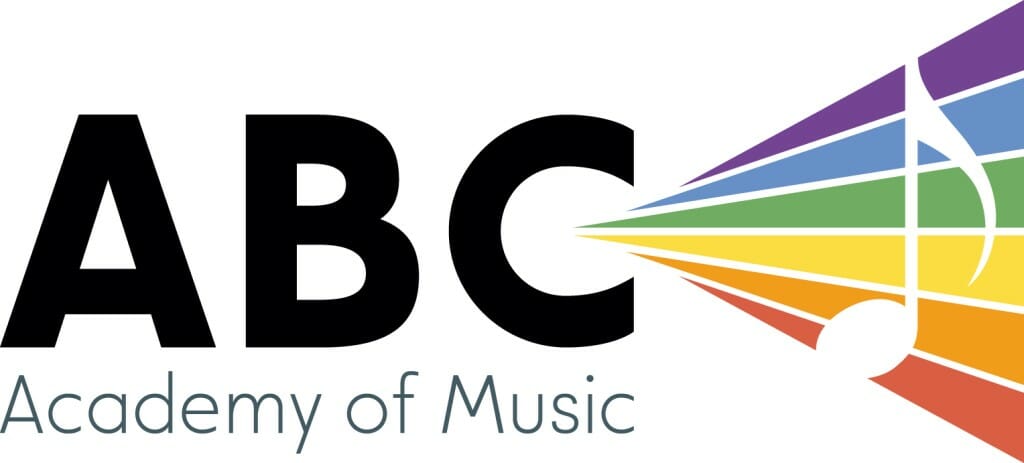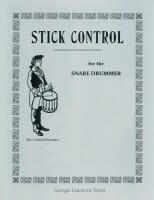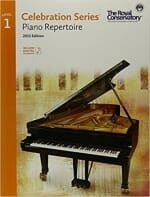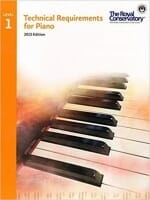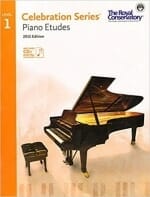Jasmine Tsui is an interdisciplinary artist specializing in percussion performance, contemporary improvisation, and arts education. As a creator and composer, Jasmine takes great joy in blending art forms — drawing from her background of painting, musical performance, and dance — and exploring the multitude of ways these practices can influence, inspire, and interact with each other.
Having a colorful and versatile musical background, Jasmine has had various performance opportunities spanning orchestral performance to free improvisation. Originating from an orchestral background, she has participated in the Vancouver Symphony Orchestra Institute (VSOI) and the National Youth Orchestra of Canada (NYOC). Other programs she has performed with include the Yarn/Wire Digital Summer Institute and the Young Artist Program for the Scotia Festival of Music. When she isn’t teaching, improvising, or making art, Jasmine is most likely collaborating with duo partner and co-founder of Duo Cichorium, Louis Pino. Together, they blend performance, improv, custom electronics, and visual art to create grand multimedia works rooted in playfulness, absurdity, and abstraction.
Her teaching philosophy is rooted in the classical idiom, prioritizing technique and fundamentals while leaving room for holistic creative exploration. Jasmine is a firm believer in making art accessible, and aims to reflect that in her adaptive and playful approach to teaching.
Jasmine holds a Masters Degree in percussion performance as well as an Advanced Certificate in performance from the University of Toronto, studying under the tutelage of Aiyun Huang, Beverley Johnston, and Charles Settle.
Get to know Jasmine…Beyond the Bio!
Hobbies: improvising, drawing, watching movies
Musical influences: Kikuo, Pauline Oliveros, Bjork, Nicole Lizée, Nahre Sol, Anthony Braxton, Favourite food: sunny side up egg on toast, congee
Least favourite food: raw bell peppers
Favourite music: orchestral, electro-acoustic, vocaloid, pop punk
Favourite album: SAVED! By Reverend Kristin Michael Hayter
Favourite movie: Hunt for the Wilderpeople, The Muppet Movie, Soul
Favourite video game soundtrack: Undertale
Favourite musical theatre/opera: Little Shop of Horrors, Chicago
Best quote from your teacher: “Just go out there and have fun!”
Favourite quote: “Sucking at something is the first step to being sorta good at something” – Jake the Dog, Adventure Time
Favourite book: The Graveyard Book by Neil Gaiman
Latest Homework from Jasmine
Is Jasmine Your Teacher?
Sign up now to get your weekly assignments delivered, and never lose your homework sheet again!
Assignments for the week of November 13th, 2024
Hakim
Technical Exercises – Working through 1 octave scales starting on C – hands separately and together.
- Practicing as both solid blocked hand positions and stepping through – not just practicing stepping through quickly.
- Practicing with a legato, staccato, and detached articulation.
Celebration – Working through start to finish hands together – being able to play through without hesitation. Double check where you need to move between sections (like between measures 8-9).
Bartok – Working through exercises #1-6 being prepared to play through any of them start to finish without hesitation – hands together.
Clara
Technical Exercises – Working through our new 1 octave C major scale – only hands separately.
- Playing through as solid blocked chords and then stepping through while still thinking about solid hand positions. Moving horizontally between positions in the same way, stepping or solid blocks.
- Try practicing with a variety of articulations (legato, staccato, detached and dropping from the arm)
Lesson Book – Pages 59-62
- Octopus – Jumping between Bass and Middle C in the LH. Playing our C 1 octave scale in measure 5 as written (only in finger 3) and using our scale fingering we learned (groups of 5 and 3 fingers, changing hand position)
- Copy Cat – RH presenting an idea (melody, rhythm, and dynamics), LH copying. Noticing when our pattern breaks/intervals change.
- Grandmother – starting HS, noticing how our RH in measure 5 copies our LH in measure 1 before trying to add hands together.
Assignments for the Week of October 6, 2024
Clara
Technical Exercises – 5 finger major scale patterns starting on C, G, D, A, E, B, F#, and C# 5 finger scale patterns – Oct 6 Clara
- Finding our hand position based on our pattern of half steps and whole steps
- Stepping up and down each scale pattern, saying all note names – practicing hands separately until comfortable before trying hands together.
Lesson Book – pages 54, 55, 57, and 58 Scans for Clara – Oct 6
- Working on cementing/memorizing home notes on the staff (Bass C, Bass F, Middle C, Treble G), watching out for steps vs. skips around these notes.
- Starting to memorize other notes on the staff (focusing on space notes – Treble clef “FACE in the space”, Bass clef “All Cows Eat Grass”)
Hakim
Technical Exercises – Being prepared to find and play 5 finger major scale patterns (hands separately and together) starting on C, G, D, A, E, B, F#, and C#.
Bartok – Exercises #1-6, double checking and writing down all starting notes – being prepared to play each exercise hands together. Bartok Mikrokosmos Book 1 1-19
Celebration – Making sure you know the “road map” of this piece start to finish for next week! Making sure we aren’t repeating our beginning idea longer than is noted (4 measure groups – 3 measures of our pattern, then 1 measure of our upward sweep idea)
- Watching out for hand position changes at measures 9-12 – using left hand finger 4 to shift to the next hand position as discussed.
Assignments for the week of October 23rd, 2024
Sara
Listening – Harry Somers “Feller from Fortune”
Technical Exercises – Continuing with B Major – 2 octaves HT for everything
- Parallel motion scales – being sure to keep our wrist/arm neutral, our bridge/knuckles supported, and our fingers curved around our bubble especially when we are mostly on black keys (no flat fingers!)
- Triads (solid/broken), working on letting our elbows lead a “down and out” circular motion like we tried together – letting one circle carry us to the next position. Our hands should be mirroring/moving in the opposite direction of each other.
- Arpeggios – using arm motion to help carry us horizontally across the keyboard (no finger crossing legatos between hand positions)
Schubert – continue with slow hands separate practice
Bartok – #29-31 – Making sure we can follow each hand separately so that we can comfortably play through without getting overwhelmed.
- Starting HS, try singing along with one hand while you play (HS and HT), play one hand staccato and one hand legato, one hand forte/one hand piano, etc.
Beethoven – Noticing in places like measure 3, 7, 21, and 25 how our hands link up on the main beats.
- Practice just playing the main eighth notes in the LH (without the upper note that we return to each time), then linking that up with the RH. Then adding in and “ghosting” all of our LH syncopated sixteenth notes so we still are following when our hands link together.
- Thinking about our “conversation” between characters – showing large dynamic changes clearly. Our brighter and louder “older sibling” at measure 1 versus the tip-toeing softer “younger sibling” at measure 3.
- Remember that your RH is the melody in most of this piece, keeping our RH as the most important to our ear with dynamics throughout the entire piece (unless both hands share our main idea like in measure 35)
Clara
Technical Exercises – 5 finger scale positions starting on C, G, D, A, E, and B
- Following our pattern of half steps and whole steps for each position, saying all note names out loud.
- Stepping up and down in our hand position, then outlining our triad shape.
Lesson Book – Pages 50-53 Scans for Clara – Oct 23
- Welcome to the Parade – Try changing our dynamic levels and “recomposing” this piece how you want it!
- Hey Hey/Allegro – Watching for skips on the staff (line note to line note, skipping a finger/key on the keyboard)
Hakim
Bartok – Working through exercises #1-6 – double check/write in your starting notes for both hands
- Practice playing through hands separately and together, saying note names out loud.
Celebration – Working through entirely to the end hands together.
- Make sure you are confident of hand positions in places like measure 4 and 14, check how similar they are to your starting positions.
- Watching for our pattern as we change hand positions in measures 8-12
Assignments for the Week of October 16th, 2024
Sara
Listening
- Rebecca Clarke’s “The Seal Man” (for piano and voice)
- Rebecca Clarke’s Viola Sonata, first movement (for piano and viola)
Technical Exercises – Continue with E Major
- Scales, triads (solid HS and HT, broken only HS),
- Arpeggios (only HS – thinking of blocked hand positions moving from the arm horizontally/sideways instead of crossing fingers under)
Schubert – continuing slow hands separate practice for the most part – be patient with yourself! We aren’t aiming for speed at this point, just to get things comfortable and settled in your brain/hands. Speed will come with time.
- Thinking of bouncing between hand positions from your arm, instead of trying to make everything legato in the fingers!
- Focusing on LH jumps so that you are building them into your memory, this will allow you to focus more on your RH while playing.
- For RH: making use of your arm to help with awkward hand position changes like in measures 7-8 and 9-10.
Sonatina in F – Finding entire hand positions and mentally grouping things up, like in measures 25-43 in the RH (thinking of 3 big hand positions, instead of each individual note)
- Thinking about the “conversation” in this piece to help with remembering rests (like in measures 43-50), always leading to beat 1 of the next measure.
Bartok – Continuing with #25-28
Clara
Technical Exercises – Continue practicing 5 finger major scale positions starting on C, G, and D (watching out for F# finger 3 in D position) – practicing hands separately and together; trying legato, detached, and staccato articulation.
Lesson Book – pages 47-49, 50-51 if time. Focusing on reading steps around the home notes (Middle C, Treble G, Bass F).
Hakim
Celebration – starting new piece, watching for changing hand positions and making sure you are confident on note names!
Distant Chimes – Continuing to work through, map out hand position changes as solid chords in the same way as celebration.
- Writing in note names for starting hand positions if you need to
Bartok – Work through exercises 1, 2a, 2b, and 3
- Make sure you are 100% confident in your starting notes, then try reading through based on the shape of the line/whether we are stepping up or down – don’t worry about individual note names yet.
- Once comfortable playing through, practicing while saying note names out loud, trying not to slow down at all.
Assignments for the Week of October 9th, 2024
Sara
Listening: Franz Schubert’s “Gute Nacht” from Winterreise (“Good Night” from Winter Journey)
Technical Exercises
Continuing in B Major – Review fingerings from attached page for scales (LH especially just to be confident!) and triads.
-Triads – watching out that we are always outlining each chord inversion with fingers 1 and 5 (which feels much different from our arpeggio fingerings in this key).
-Broken triads – practicing hands separately thinking about leading from our elbow! “Drawing circles” going down and out from the center with your elbows as you play each inversion.
Bartok
Focusing in on #20-24 – double checking details like strange key signatures, noticing when our patterns are broken, working through trying to keep your eyes an entire measure ahead of what you are playing!
Lesson Book – Sonatina in F Major
Working hands separately, watching for patterns and things that you recognize (like scales, triad shapes, etc.).
-Practicing slowly in small groups of measures, focusing in on places that may catch us off guard like measures 19-22 where our pattern changes.
-For LH, being careful to check in and relax our hand/wrist – use your arm to help stay relaxed like our broken triad exercises.
Schubert
Continue HS work – keeping your pencil handy to mark in any unfamiliar notes on ledger lines, any extra fingerings that you need reminders of, as well as circling/starring any new ideas that may catch you off guard (like the shift in harmony at the very end)
-for RH: focusing in and practicing sections where we have a lot of textures in one hand (like in measures 24-26 or so)
-for LH: playing LH jumps as a solid blocked chord (like we talked about in Pierrot and Pierrette) so that we are able to understand how much or little things change between chords.
Hakim
Technical Exercises
Practicing 5 finger major scale patterns, starting on C, G, D, A, and E
-finding chords/major triads in each position using fingers 1-3-5
Distant Chimes
Doubling checking starting notes for each new hand position, mark down the note names for your starting positions.
-Practice hands separately and hands together as solid chords in fingers 1 and 5 to get used to the changing hand positions.
Clara
Technical Exercises
5 finger scales starting on C, G, and D.
-Practicing stepping legato/smoothly, and staccato/bouncy; saying note names and finger numbers out loud. Practice hands separately and together, trying out in different registers of the keyboard.
Lesson Book – Pages 42-46, focusing on reading steps on the staff around Middle C and Treble G. Faber scans for Clara – 42-46
Assignments for the week of October 2, 2024
Sara
Pieces to Listen:
- Bela Bartok – Music for Strings, Percussion, and Celeste
https://www.youtube.com/watch?v=QElT9KD4uX8&ab_channel=invertedninthchord
- Franz Schubert – “Gute Nacht” from Winterreise
https://www.youtube.com/watch?v=a8I5Gn3bVN0&ab_channel=WarnerClassics
Technical Exercises – Review LH fingerings for E Major scale
- New Key – B Major (5 sharps!): Scales (parallel, HS and HT)
- Triads (solid HT, broken HS) – watching out for fingers 1 and 5 on black keys, moving further into the keys so that you are comfortable.
- Arpeggios (HS) – thinking of moving horizontally with your arm instead of crossing fingers over/under to stay relaxed and in control. Remember to try and keep finger 3 lined up with your elbow so we don’t get any “chicken wings” in the elbows!
Bartok – #20-21 (22 if time), starting HS and watching for when our patterns breaks! Bartok Mikrokosmos Book 1 20-36
- Trying to follow the shape of the line and being sure to look ahead as you read.
- Making sure we are practicing with a nice healthy forte! Think of playing deep into the keys instead of skating over the top of them, especially in Bartok and Technical Exercises.
Pierrot & Pierrette – focusing on dynamics:
– balance between hands (RH melody, LH supporting/accompaniment), watching for any marked dynamics.
Schubert: Moments Musicaux no.3 – Working entirely HS.
- RH: working through small sections RH alone, ignoring ornaments for now as we get comfortable with the structure of the piece.
- Have your pencil handy as you work to mark down any fingerings.
- Working through RH layers so that we are able to play and hear them separately.
- Circle any difficult/awkward feeling sections and isolate the most challenging part – focusing in and practicing these small sections/jumps until you are able to move through them without hesitating.
- LH: the “motor” of this piece, practicing repeated chords moving back and forth to get comfortable with the large jumps. Adding extra challenges to get it comfortable quickly (for example: repeating chords multiple times, adding an extra octave in between the jumps like we’ve tried together, playing only top or bottom notes of chords when you jump, etc.)
Clara
Lesson Book: Pages 36-41 – Reading on the staff, focusing on home notes (Bass F, Middle C, and Treble G). Faber scans for Clara – 36-41
- Watching for which finger is in charge of each home note, and if there are more than one note being played at a time vertically (either in one hand, like “Driving in the G Clef”, or in both hands at once, like “Best Friends”)
Exercises: Working through 5 finger scales starting in a C, G, and D hand position.
- Practicing hands separately, trying hands together if comfortable.
- Saying note names out loud while practicing.
Hakim
Exercises: Working through 5 finger scale hand positions around the keyboard, starting in C, G, D, A, and E 5 finger positions.
- Watching out for our pattern of half steps and whole steps in each position to find any sharps
- 5 finger scale pattern – Whole step, Whole step, Half Step, Whole Step
- Practicing hands separately and together slowly at first: be prepared to try legato, staccato, or detached. (Remember, when we play through things quickly before they’re comfortable it will take much longer to get comfortable!)
Distant Chimes – Working through all the way to the end hands together, keeping an eye on changing hand position and watching for repeating patterns (like measures 5 and 7, or 6 and 8)
- Watching out for hands crossing over all the way through, especially in measures 13 to the end.
Preferred Books for Jasmine’s Students
Click to buy them here, and they’ll come right to your house! What could be easier?
STICK CONTROL
George Lawrence Stone’s Stick Control is the bible of drumming. In 1993, Modern Drummer magazine named the book one of the top 25 books of all-time. In the words of the author, it is the ideal book for improving: control, speed, flexibility, touch, rhythm, lightness, delicacy, power, endurance, preciseness of execution and muscular coordination, with extra attention given to the development of the weak hand.
PROGRESSIVE STEPS TO SYNCOPATION
Voted second on Modern Drummer’s list of 25 Greatest Drum Books in 1993, Progressive Steps to Syncopation for the Modern Drummer is one of the most versatile and practical works ever written for drums. Created exclusively to address syncopation, it has earned its place as a standard tool for teaching beginning drummers syncopation and strengthening reading skills.
Modern School for Xylophone, Marimba, Vibraphone

The Goldenberg book “has been used by generations of orchestral mallet players to develop their skills. As well as studies and etudes, this book includes excerpts of major orchestral repertoire for keyboard percussion instruments. This edition, edited by Tony Cirone, includes phrasings that were inherent in the music but not specifically written out. Stickings are also addressed: the original stickings are in uppercase letters, and the added stickings are in lowercase. This book is the primary source for keyboard percussion players to learn technique and orchestral repertoire.”
RCM Voice Repertoire

A Comprehensive Voice Series serves as the official resource for voice assessments of the Royal Conservatory Music Development Program. Featuring an outstanding selection of voice literature and supporting materials, this series offers a truly enriched learning experience to help ensure student success. As in previous editions, Resonance encompasses a rich and varied selection of Repertoire, Vocalises and Recitatives that students of all ages and voice types will find appropriate to their musical interests and level of technical ability.
Belting - A

Written for ages 5 and 6, My First Piano Adventure captures the child’s playful spirit. Fun-filled songs, rhythm games and technique activities develop beginning keyboard skills.
Faber & Faber Piano Adventures
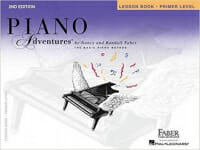
The 2nd Edition Primer Lesson Book introduces the keyboard, note values, and the grand staff. Students play in C 5-finger scale patterns, develop recognition of steps and skips, and learn letter names independent of finger number. Musicianship is built through the use of dynamics and coloristic experimentation with the pedal. The book is organized into units which represent the major concepts and skills. As new units are introduced, earlier concepts and skills are constantly reviewed.
Faber Piano Adventures

The 2nd Edition Level 1 Lesson Book introduces all the notes of the grand staff, elementary chord playing, and the concept of tonic and dominant notes. Students play in varied positions, reinforcing reading skills and recognizing intervals through the 5th. Musicianship is built with the introduction of legato and staccato touches. This level continues the interval orientation to reading across the full range of the Grand Staff. The 5-finger approach is presented here in a fresh, musically appealing way.
Belting - A

Written for ages 5 and 6, My First Piano Adventure captures the child’s playful spirit. Fun-filled songs, rhythm games and technique activities develop beginning keyboard skills.
Modern School for Xylophone, Marimba, Vibraphone

The Goldenberg book “has been used by generations of orchestral mallet players to develop their skills. As well as studies and etudes, this book includes excerpts of major orchestral repertoire for keyboard percussion instruments. This edition, edited by Tony Cirone, includes phrasings that were inherent in the music but not specifically written out. Stickings are also addressed: the original stickings are in uppercase letters, and the added stickings are in lowercase. This book is the primary source for keyboard percussion players to learn technique and orchestral repertoire.”
The Brown Scale Book

This essential resource includes all major and minor scales, triads, arpeggios, dominant sevenths, and chromatic scales organized by key. A favorite for decades, The Brown Scale Book belongs in every student’s library.
